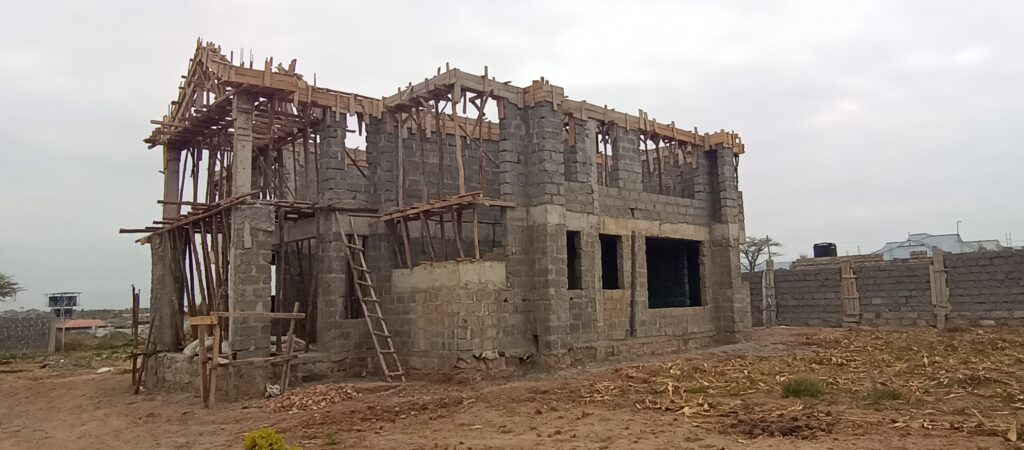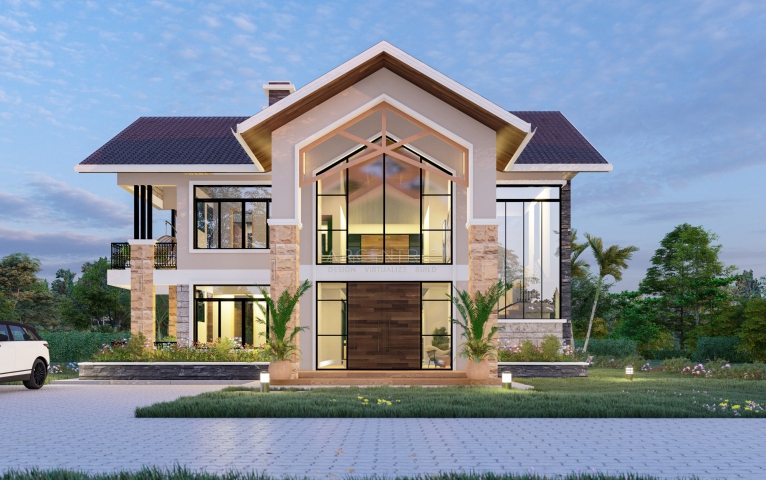Building your dream home in Kenya is an exciting journey, but it comes with unique challenges that can turn your construction project into a nightmare if you’re unprepared. Whether you’re planning to build in Nairobi, Mombasa, Kisumu, or anywhere across Kenya, understanding these common pitfalls can save you millions of shillings and months of delays.
At Towerflex Construction, we’ve helped hundreds of Kenyan families navigate the complex world of home construction. Based on our extensive experience, we’ve identified the 10 most common challenges homeowners face—and more importantly, how to solve them.
Why Home Construction in Kenya Is More Challenging Than You Think
The Kenyan construction industry has grown rapidly, with the sector contributing approximately 5.7% to the country’s GDP. However, this growth has also brought increased complexity, stricter regulations, and higher material costs that catch many first-time builders off guard.
From the bustling construction sites of Kiambu to the coastal developments in Kilifi, the challenges remain remarkably similar. Let’s dive into each challenge and explore practical solutions.
1. Budget Constraints and Cost Overruns
The Challenge: Material prices in Kenya fluctuate frequently due to inflation, import taxes, and supply chain disruptions. Cement prices, for instance, can vary by 15-20% within a single quarter.
Real Example: A client planning a 4-bedroom house in Karen budgeted KES 8 million but ended up spending KES 10.5 million due to steel price increases and unexpected site preparation costs.
Solutions:
- Add a 20-30% contingency fund to your initial budget
- Lock in material prices with suppliers for large orders
- Consider phased construction to spread costs over time
- Work with experienced quantity surveyors for accurate cost estimates
Pro Tip: Use locally sourced materials where possible—Kenyan-made tiles and stones can be 40% cheaper than imports while maintaining quality.
2. Finding Reliable Construction Professionals in Kenya
The Challenge: The National Construction Authority (NCA) registers contractors, but finding genuinely reliable professionals remains difficult. Many contractors lack proper insurance, skilled labor, or project management experience.
Warning Signs to Watch:
- Contractors demanding large upfront payments (>30%)
- No valid NCA registration or insurance certificates
- Reluctance to provide references from recent projects
- Extremely low quotes compared to market rates
Solutions:
- Verify NCA registration at nca.go.ke
- Request site visits to ongoing projects
- Check reviews on Google My Business and social media
- Interview at least 3-5 contractors before deciding
- Ensure contractors have comprehensive insurance coverage
3. Navigating Kenya’s Construction Approval Process
The Challenge: Obtaining building approvals in Kenya involves multiple authorities—county governments, NEMA, Kenya Power, and sometimes KEBS. The process can take 3-6 months even for straightforward residential projects.
Required Approvals:
- Development Permission from County Government
- Building Plan Approval
- Environmental Impact Assessment (for certain projects)
- Fire Safety Certificate
- Occupancy Certificate
Solutions:
- Start the approval process 4-6 months before construction
- Hire architects familiar with local county requirements
- Maintain regular follow-ups with approval authorities
- Consider using approval consultants for complex projects
- Ensure all drawings comply with Kenya Building Code
4. Land-Related Issues and Soil Conditions
The Challenge: Kenya’s diverse geography presents unique soil challenges. Black cotton soil (common in Nairobi and Central Kenya) expands and contracts with moisture, potentially damaging foundations.
Common Land Issues:
- Unclear title deeds or ownership disputes
- Poor soil bearing capacity
- Seasonal flooding in low-lying areas
- Encroachment by neighbors
- Undisclosed easements or way-leaves
Solutions:
- Conduct comprehensive soil tests before design
- Verify land ownership through official searches
- Survey property boundaries professionally
- Consider specialized foundations for challenging soil conditions
- Engage legal experts for complex land issues
5. Material Quality and Supply Chain Problems
The Challenge: Kenya imports many construction materials, making supply chains vulnerable to disruptions. Additionally, counterfeit materials flood the market, compromising building integrity.
High-Risk Materials:
- Steel reinforcement bars (rebars)
- Cement from unverified manufacturers
- Electrical cables and fittings
- Roofing materials
- Plumbing fixtures
Solutions:
- Purchase materials from KEBS-certified suppliers
- Verify material authenticity using manufacturer codes
- Buy from established retailers with warranties
- Inspect deliveries against specifications
- Store materials properly to prevent deterioration
6. Weather-Related Construction Delays
The Challenge: Kenya’s climate patterns significantly impact construction schedules. The long rains (March-May) and short rains (October-December) can halt concrete work and other critical activities.
Weather Impact on Construction:
- Concrete curing affected by heavy rains
- Access roads become impassable
- Material transportation delays
- Worker productivity decreases
- Increased risk of accidents
Solutions:
- Plan construction schedules around weather patterns
- Invest in weather protection (temporary roofing, covers)
- Maintain flexible timelines with weather buffers
- Use quick-setting concrete where appropriate
- Implement proper site drainage from day one
7. Design Miscommunication and Change Orders
The Challenge: Poor communication between homeowners, architects, and contractors leads to costly changes during construction. Many Kenyans build without detailed architectural drawings, relying on “fundis” who may not understand modern construction techniques.
Common Miscommunications:
- Room sizes and layouts
- Electrical and plumbing fixtures placement
- Material specifications and finishes
- Structural requirements
- Landscaping and external features
Solutions:
- Invest in detailed architectural drawings and 3D renderings
- Hold regular site meetings with all stakeholders
- Document all changes in writing
- Use visual aids and references for material selections
- Engage qualified architects and structural engineers
8. Labor Shortages and Skills Gap
The Challenge: Kenya faces a shortage of skilled construction workers. Many experienced artisans have moved to Middle Eastern countries for higher wages, leaving a skills gap in specialized areas like electrical work, plumbing, and finishing.
Critical Skill Shortages:
- Qualified masons and concrete workers
- Licensed electricians and plumbers
- Skilled carpenters and joiners
- Certified welders
- Project supervisors with formal training
Solutions:
- Start recruitment early and maintain worker databases
- Provide on-site training for semi-skilled workers
- Partner with technical colleges for apprentices
- Offer competitive wages to retain good workers
- Consider importing specialized skills for complex projects
9. Unexpected Site Conditions and Hidden Costs
The Challenge: Site conditions in Kenya can be unpredictable. Rock outcrops, underground springs, or poor access roads can add significant costs not factored into initial budgets.
Common Hidden Costs:
- Rock blasting or excavation
- Retaining walls for sloped sites
- Improved access roads
- Additional drainage systems
- Utility connections longer than anticipated
- Compound security and watchman facilities
Solutions:
- Conduct thorough site investigations before design
- Include site development costs in initial budgets
- Plan for temporary facilities and site access
- Consider phased development for large projects
- Maintain detailed cost tracking throughout construction
10. Balancing Dreams with Budget Reality
The Challenge: Many Kenyan homeowners have ambitious dreams influenced by social media and international designs, but local budgets may not accommodate these aspirations without compromising functionality or quality.
Common Dream vs. Reality Conflicts:
- Large swimming pools vs. practical garden space
- Imported finishes vs. local alternatives
- Smart home technology vs. basic electrical needs
- Multiple living rooms vs. practical space utilization
- Elaborate facades vs. structural integrity
Solutions:
- Prioritize functionality over aesthetics initially
- Plan upgrades in phases as budgets allow
- Research local alternatives to expensive imports
- Focus on good design proportions rather than size
- Consider long-term maintenance costs in decisions
How Towerflex Construction Helps You Overcome These Challenges
At Towerflex Construction, we’ve developed systems and partnerships to address each of these challenges:
Our Comprehensive Approach:
- Budget Management: Detailed cost estimates with built-in contingencies
- Quality Assurance: Partnerships with verified suppliers and skilled craftsmen
- Project Management: Dedicated project managers for every construction
- Regulatory Navigation: In-house expertise in Kenya’s approval processes
- Risk Mitigation: Comprehensive insurance and quality guarantees
Why Choose Towerflex Construction?
- Over 10 years of experience in Kenyan construction
- Portfolio of 200+ successful residential projects
- NCA Category 1 registration and full insurance coverage
- Transparent pricing with no hidden costs
- Post-construction support and warranties
Ready to Start Your Construction Journey?
Building your dream home in Kenya doesn’t have to be a nightmare. With proper planning, the right team, and realistic expectations, you can successfully navigate these challenges and create the home you’ve always wanted.
Next Steps:
- Free Consultation: Contact Towerflex Construction for a no-obligation consultation
- Site Assessment: Our experts will evaluate your land and provide preliminary recommendations
- Budget Planning: Receive detailed cost estimates based on your requirements
- Design Development: Work with our architects to create your perfect home design
- Project Execution: Experience stress-free construction with our project management system

